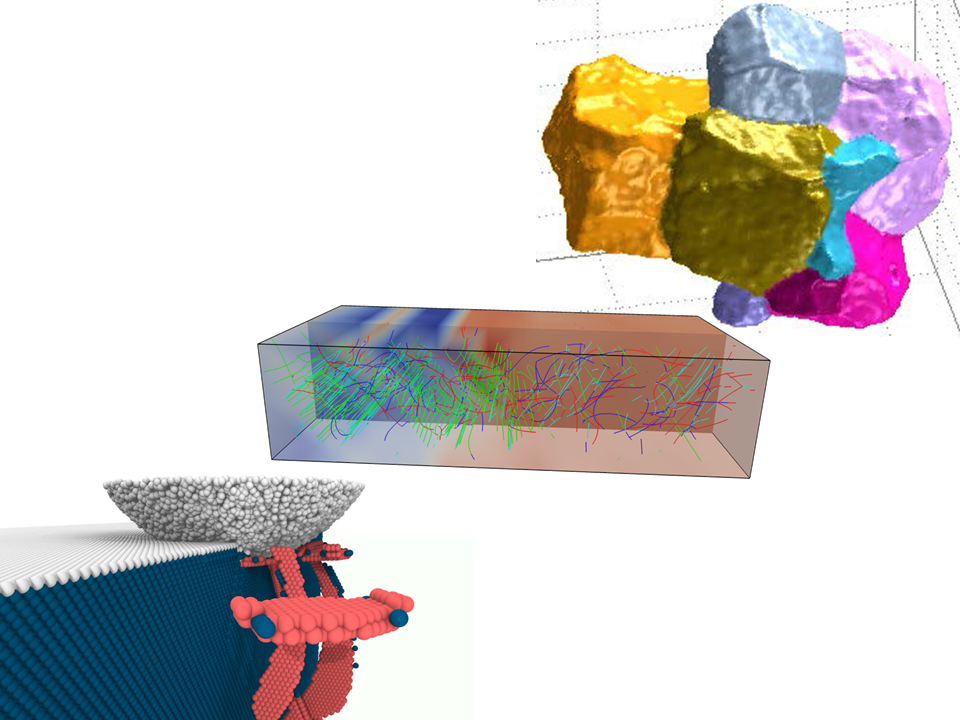Multiscale Modelling of Materials
Materials have structure on many scales. Atoms arrange in crystalline or disordered configurations. Within these configurations they form point or line defects that largely dominate materials’ properties. These defect structures live within grains or domains that are separated by interfaces and together form a material’s microstructure. This hierarchy of defects requires that functional materials must often be hierarchically defined to achieve extreme surface areas or other unusual properties. Extrapolation from the motion of the individual atom to the macroscopic response like the charge-discharge curve of a porous electrode or the mechanical stress-strain relationship requires a hierarchy of models at electronic, atomic-, mesoscopic and continuum scales.
Groups at CTMN cover these aspects of materials modeling on all scales. Methods include electronic density functional theory, tight-binding models, classical molecular dynamics, discrete dislocation dynamics, phase-field models and continuum approaches for mechanics and transport. These are applied to explore questions arising in material processing, mechanics of materials and electrochemistry.
| Name | Institute |
|---|---|
| Jacob, Timo | Helmholtz Institute Ulm for Electrochemical Energy Storage (HIU) |
| Gumbsch, Peter | Institute for Applied Materials - Computational Materials Science (IAM-CMS) |
| Kamlah, Marc | Institute for Applied Materials - Materials and Biomechanics (IAM-WBM) |
| Korvink, Jan | Institute of Microstructure Technology (IMT) |
| Latz, Arnulf | Helmholtz Institute Ulm for Electrochemical Energy Storage (HIU) |
| Nestler, Britta | Institute for Applied Materials - Computational Materials Science (IAM-CMS) |
| Scharfer, Philip |
Institute of Thermal Process Engineering (TVT) |
| Wenzel, Wolfgang | Institute of NanoTechnology (INT) |


